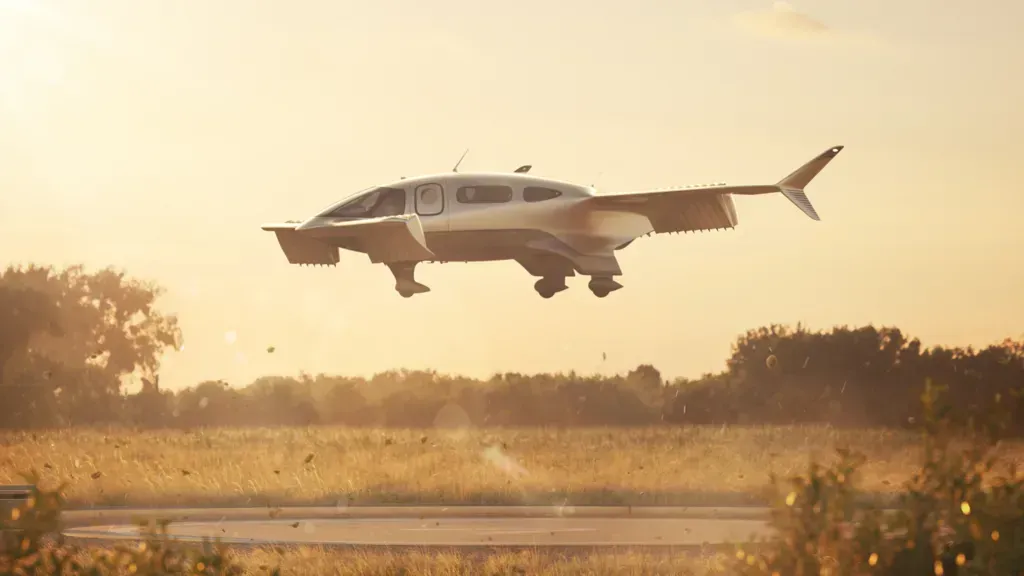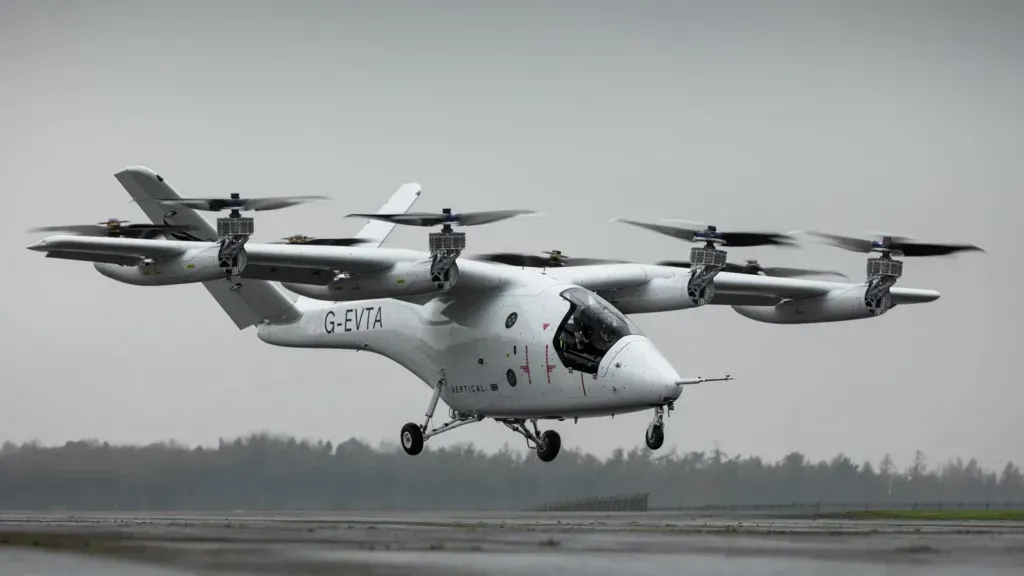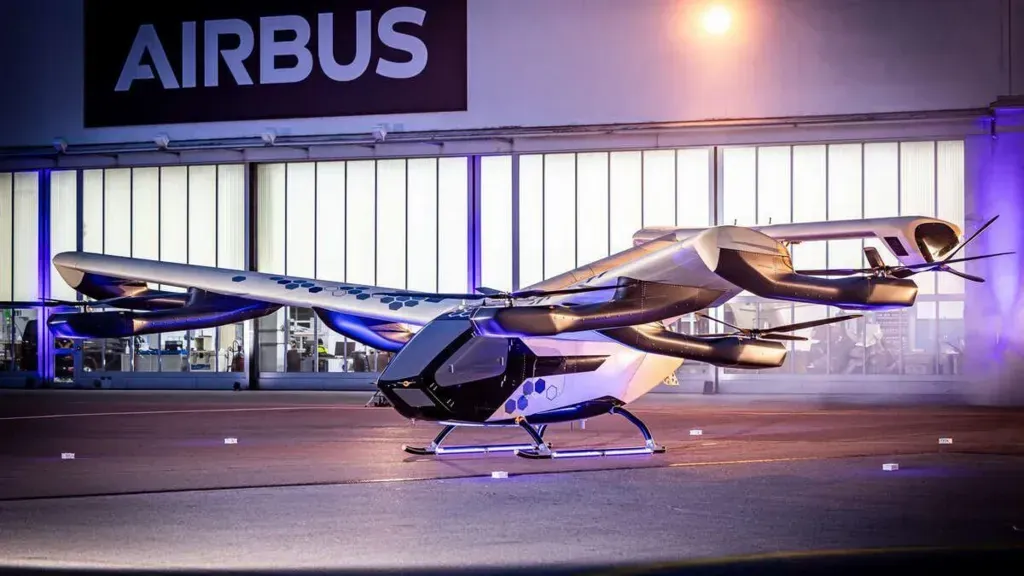Europe's dreams of a flying taxi are crumbling due to lack of money: what's going on with eVTOL
Kyiv • UNN
The leading European developers of electric vertical take-off aircraft are facing financial problems. Lilium has declared bankruptcy, and Volocopter may come under the control of Chinese Geely.

Leading European manufacturers developing electric aircraft with vertical takeoff and landing (eVTOL) have faced serious financial difficulties. Lilium has declared bankruptcy, and Volocopter is negotiating with Chinese Geely to sell 85% of its shares, the BBC reports, writes UNN.
Details
One of the innovations at the Olympic Games in Paris this year was supposed to be an electric flying taxi. The German company Volocopter has promised that its electric two-seater Velocity aircraft will carry passengers around the city. This never happened. Instead, the company conducted demonstration flights. Although non-compliance with this deadline was embarrassing, a more serious problem was playing out behind the scenes - Volocopter was urgently trying to attract new investments in order to save the company, the newspaper writes.
Negotiations on a loan of 100 million euros from the government failed in April.
Hopes are now pinned on China's Geely, which is in talks to acquire an 85% stake in Volocopter in exchange for $95 million in financing, according to a Bloomberg report. The deal could mean that all future production will be moved to China.
Volocopter is one of dozens of companies around the world developing electric vertical takeoff and landing aircraft (eVTOL).
Their machines promise the flexibility of a helicopter, but without such cost, noise and emissions.
However, faced with the huge costs of regulatory approval of such new aircraft and the subsequent increase in production capacity, some investors are abandoning them.

One of the most high-profile "victims" is Lilium.
A German company has developed a radical approach to the eVTOL theme.
The Lilium aircraft uses 30 electric jets that can be tilted synchronously to transition from vertical lift to direct flight.
The concept proved attractive, and the company said it had orders and memoranda of understanding for 780 aircraft from around the world.
She was able to demonstrate the technology using a remotely controlled scale model. Construction of the first full-size aircraft has already begun, and testing was scheduled to begin in early 2025.
Back at the Farnborough Airshow in July, Lilium's chief operating officer Sebastian Borel spoke confidently.
"We are definitely burning money," he told the BBC. - But this is a good sign, because it means that we are producing an airplane. By the end of the year, we will have three aircraft in production, and we have also raised 1.5 billion euros.
But then the money ran out.
Lilium was trying to get a loan in the amount of 100 million euros from the German development bank KfW. However, this required guarantees from national and regional Governments, which were never implemented.
In early November, the company began bankruptcy proceedings for its main operating businesses, and its shares were removed from the Nasdaq stock exchange.
At the moment, work on the new aircraft continues as the company works with restructuring experts to sell the business or attract new investments. However, putting the new e-jet into production looks more difficult than ever.

Vertical Aerospace is a major British player in the eVTOL market. The Bristol-based company was founded in 2016 by businessman Stephen Fitzpatrick, who also created OVOEnergy.
Its striking V4 design uses eight large propellers mounted on thin airplane-type wings to create lift. Fitzpatrick made ambitious statements about the plane, suggesting that it would be "100 times" safer and quieter than a helicopter, for 20% of the cost.
The company has made progress. After completing the remote-controlled test program, it began conducting manned tests earlier this year. Initially, they were conducted with an airplane tied to the ground. In early November, he carried out his first takeoff and landing without a leash.
But there were also serious setbacks. Last August, a remotely piloted prototype was severely damaged when it crashed during tests at Cotswold Airport after a propeller blade fell off.
In May, one of its key partners, the engineering giant Rolls Royce, backed out of a deal to supply electric motors for the aircraft.
Ambitions remain sky-high. Vertical Aerospace says it will deliver 150 aircraft to its customers by the end of the decade. By that time, it also expects to produce 200 units per year and break even in monetary terms.
But the company has run into financial difficulties and recently negotiated a rescue deal with its largest lender, the American company Mudrick Capital.
As part of the deal, Mudrick will invest up to $50 million in Vertical, while $130 million of loans from Mudrick will be converted into shares.
This will leave the American investment firm with a 70% stake in Vertical, while Fitzpatrick's stake will be reduced from 70% to 20%.

Amid the turbulence, one European project is quietly going according to plan, says Bjorn Ferme, who has experience in aviation technology and pilots combat aircraft for the Swedish Air Force. He now works for the aerospace consulting company Leeham.
He says the eVTOL project being implemented at Airbus is likely to survive.
Named City Airbus NextGen, the four-seat aircraft has eight propellers and a flight range of 80 km.
"This is a technology project for their engineers, they have the money and the knowledge," says Ferme.
In other parts of the world, other well-funded startups can count on a good chance to put their aircraft into production. This will include Joby and Archer in the USA.
After the planes are produced, the next task will be to check whether there is a profitable market for them.
The first routes are likely to be between airports and urban centers. But will they make a profit?
"The biggest problem in terms of operating costs is the pilot and batteries. The batteries need to be changed a couple of times a year," says Ferme.
Given all the uncertainty and costs, as indicated, one may wonder why investors are investing in new electric aircraft at all.
"No one wanted to miss out on the next Tesla," Ferme laughs.